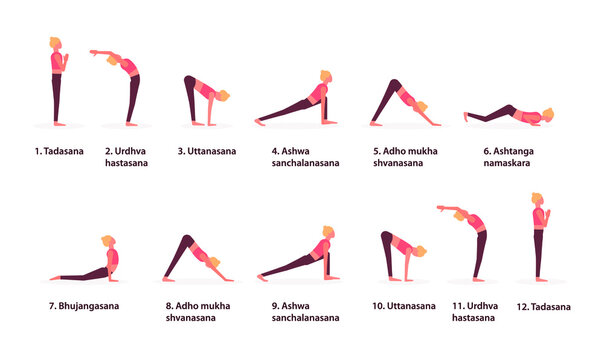Morning Yoga Aligned with Your Body Clock: Energize Your Day
Starting your day with yoga that aligns with your body's natural circadian rhythm can dramatically improve your energy, focus, and overall health. Our internal body clock controls sleep, hormone release, metabolism, and mental alertness, making morning yoga the perfect time to sync with these natural cycles. This blog will guide you through detailed morning yoga routines, Ayurvedic time insights, and pose sequences to help you start your day with vitality and mindfulness.
Understanding the Circadian Rhythm
The circadian rhythm is an internal biological clock running on approximately 24-hour cycles. It regulates your sleep-wake cycles, hormone production, body temperature, digestion, and even immune function. Practicing yoga aligned with this rhythm enhances the body's natural efficiency and can prevent fatigue, stress, and digestive issues.
For example, cortisol, the "stress hormone," peaks in the morning to naturally wake us up. Doing dynamic yoga sequences like Surya Namaskar during this period amplifies energy and alertness while syncing with hormonal patterns.
Optimal Time for Morning Yoga
Ayurveda emphasizes that the period between 6 AM and 8 AM is dominated by the Kapha dosha. Kapha energy is slow and heavy, often leading to morning sluggishness. Morning yoga stimulates circulation, wakes up the muscles and joints, and balances this energy to prepare the body for the day.
Additionally, sunlight exposure during these hours helps regulate melatonin and serotonin, improving mood and sleep quality. Incorporating yoga into your morning routine ensures you start the day energized, focused, and stress-free.
Detailed Morning Yoga Poses & Sequences
1. Surya Namaskar (Sun Salutation)

Sun Salutation is a sequence of twelve yoga poses performed in a continuous flow to energize your body and improve flexibility.
This sequence stimulates circulation, warms up muscles, and improves joint mobility. Beginners can start with 3–5 rounds, while advanced practitioners can do 10–12 rounds. Surya Namaskar synchronizes breath with movement, promoting mind-body connection and mental clarity.
2. Cat-Cow Pose (Marjaryasana-Bitilasana)
This gentle spinal stretch relieves tension and enhances spinal flexibility.
The Cat-Cow sequence improves mobility of the vertebrae, strengthens the back, and opens up the chest for better lung expansion. Incorporate 10–15 cycles of slow, mindful movements to feel a renewed flow of energy.
3. Child's Pose (Balasana)

A calming pose to stretch hips, knees, and back, promoting relaxation.
Use Child’s Pose as a resting point between more active sequences. It activates the parasympathetic nervous system, reducing cortisol levels and calming the mind. Beginners can hold for 1–3 minutes, focusing on deep breaths.
4. Downward-Facing Dog (Adho Mukha Svanasana)

Strengthens arms and legs while stretching the spine, hamstrings, and calves.
This inversion improves circulation, relieves tension in the shoulders, and strengthens the core. Hold for 30–60 seconds, inhaling and exhaling deeply. Incorporate slight variations for advanced practitioners to challenge strength and flexibility.
5. Warrior I (Virabhadrasana I)

Builds strength and stamina while stretching the chest and lungs.
Warrior I enhances focus, stamina, and coordination. Maintain proper alignment with the back heel grounded and chest open. Hold for 20–30 seconds on each side and breathe deeply.
Advanced Morning Yoga Techniques
For those with more experience, incorporating pranayama (breathing exercises), mindfulness meditation, and dynamic sequences can further enhance energy, mental clarity, and circadian alignment:
- Kapalabhati Pranayama: Cleanses the lungs, boosts metabolism, and stimulates the brain.
- Alternate Nostril Breathing: Balances nervous system and calms mind.
- Dynamic Flow Yoga: Combining multiple poses with breath for cardiovascular benefits.
- Meditation: 5–10 minutes of mindfulness meditation to set intentions and reduce stress.
Tips to Build a Sustainable Morning Routine
Consistency is key to maximizing benefits. Here are actionable tips:
- Wake up 15–30 minutes earlier than usual to start yoga mindfully.
- Prepare your mat and space the night before.
- Hydrate immediately after waking to kickstart metabolism.
- Keep sessions short initially, gradually increasing duration.
- Mix different poses and flows to maintain engagement.
- Track your progress and adjust intensity based on energy levels.
- Combine yoga with a balanced breakfast for maximum morning energy.
FAQ
Q1: Can beginners start with this routine?
Yes. Beginners should focus on gentle movements and gradually build intensity. Always prioritize form over duration.
Q2: How does morning yoga improve sleep?
Practicing yoga in the morning aligns the circadian rhythm, which naturally regulates melatonin production, improving sleep quality at night.
Q3: Can yoga replace morning exercise?
Morning yoga can replace light-to-moderate exercise, especially if combined with dynamic sequences. For intense strength training or cardio goals, complement yoga with additional exercise.
Conclusion
Morning yoga aligned with your body clock enhances energy, mental clarity, flexibility, and overall health. By practicing the right poses, sequences, and breathing techniques during Kapha hours (6–8 AM), you harmonize with your circadian rhythm, leading to long-term benefits. Start today and experience how mindful morning yoga transforms your day.
